Dietary management in horses is critical to their health and wellness. Unsupervised or negligent feeding can cause a whirlwind of medical ailments that are painful and uncomfortable.
This article aims to provide you with 11 Tips For Choosing the Best Hay for Horses, promoting healthy standards and nutritional balance. Think of you and your veterinarian as your horse’s health and fitness coaches.
What Makes Up A Horses Diet?
The standard recommendation for full-size horses is to consume between 1.5-3% of their body weight in food daily, depending on breed, build, and workload.
Horses are foraging animals by nature and eat small regular portions throughout the day. However, horses need to eat either grass or hay when it comes to their diet.
A veterinarian may also recommend supplements and grains depending on your horse’s individual needs. But, in general, you need to make sure that your horse is not eating too little or too much.
An underweight horse or one suffering from obesity is at significant risk for other diseases and debilitating ailments. Therefore, proper pasture and barn feeding management are critical to maintaining a healthy equine companion.
The American Association of Equine Practitioners notes that hay alone may not be “meet the total dietary requirements of young, growing horses.” That said, higher quality hay may be adequate for senior citizens with less activity.
Types of Hay
Suppose you have just transferred to a new area or are seeking information for feeding your first horse. In that case, I recommend that you first consult with a local equine veterinarian who will share what hay varieties are available and which will best suit your horse’s individual needs.
As the human companion to your horse, it is your responsibility to ensure its daily intake models the equine food pyramid justly. And remember that the nutritional content of horse hay differs on “protein content, fiber, vitamins, and also the calcium/phosphorus ratio.”
Typically the two main categories of hay include legumes and grasses. Each type of hay exhibits some unique nutritional differences; both have advantages and disadvantages.
Key Differences in Hay Types
When it comes to food, what on the inside is what counts. For example, both lettuce and spinach are excellent sources of plant food. However, spinach is more nutritionally rich when compared to lettuce-it has more protein, carbohydrates, vitamins, and minerals.
The same is true of hay. Legume hay is protein-rich but lacks adequate levels of calcium and phosphorus. Because it is packed full of nutrients and minerals, legume hay has a higher calorie content which is not suitable for overweight horses or those with a higher propensity to gain those unwanted extra pounds.
Unless your horse is involved in equestrian performance sports or is a heavy worker, grass hay and its fiber-rich content usually provide adequate levels of digestible energy.
But don’t sweat it. I will share the 11 Best Hay Types for Horses and even give you some pro tips to make your selection.
Best Hay Types for Horses
Having a pristine pasture year-round is challenging to manage and pretty uncommon. Usually, horse-owners have to close it off periodically due to inclement weather or poor-quality foraging conditions.
If and when you find yourself in these conditions, you will need to incorporate hay into your horse’s feeding regimen. Here are the hay types that you can choose from:
1.) Alfalfa
Alfalfa hay is high-protein legume hay from the ‘pea’ family. It is well known amongst livestock owners for its nutrient-rich qualities and is a definite favorite amongst horse owners.
The quality and richness of this hay are tied explicitly to its harvesting schedule, so farmers must closely monitor and manage this crop according to performance, nutrition quality, growth vigor, and overall yield.
Typically, farmers that schedule their harvesting at pre-bloom will generate an alfalfa yield with the highest nutritional value. Therefore, Alfalfa has a specific grading system that considers the product’s color, texture, and nutrition.
To meet a horse’s protein needs, a horse owner should incorporate Alfalfa in its diet to account for about half of its daily forage intake. Anderson Hay and Grain Co., notes that “feeding horses Alfalfa reduces or even eliminates the need for supplements which often have a laxative effect.”
Don’t forget, though, that if your horse only performs lower intensity activities and is used mainly for recreational riding, Alfalfa may provide too high a protein and nutritional content for your horse.
Alfalfa hay is best for high-performance and high-energy output equines that consistently expel high energy levels.
2.) Clover
Clover hay is the other legume hay suitable for horses but not as popular with horse owners. In addition, the moisture content of Clover makes it a difficult crop to dry and bale for farmers.
For this reason, it, unfortunately, has a reputation for becoming moldy. And if you didn’t already know, a horse that consumes moldy hay can be susceptible to colic and other respiratory illnesses.
However, the farmer who successfully grows, drys, and bales clover hay can yield a product with a similar protein, calcium, fiber, and other nutrients like Alfalfa.
Many horse owners have reported noticing excess salivation after consuming clover hay. According to Kentucky Equine Research, “the causative agent is actually a mycotoxin produced by a fungus that grows on Clover. Known as slaframine poisoning, excessive salivation is not life-threatening [as you should be happy to know].”
3.) Timothy Grass
Although native to most of Europe, it wasn’t until Timothy Hansen promoted the hay to livestock owners that the namesake stuck in America. Not only is it relatively easy grass hay to establish, but Timothy is very palatable for horses.
Although it does not contain the same high protein levels as Alfalfa, it is sure to meet the basic requirements of horses that perform low to moderate activity.
A high-performance horse could not eat enough Timothy grass to keep up with its energy expenditure, so a mix of legume and grass hay could be a better diet alternative.
This Horsetalk article generated in New Zealand’s equine community notes that “opting for timothy hay is a wise and cost-effective choice, but you need to ensure you’re buying quality stuff.”
4.) Orchardgrass
Rich with digestible fiber content, orchard grass is a popular cool-season perennial. And although Timothy grass is more popular, orchard grass boasts a higher protein level.
Orchardgrass is a wise stored food choice for senior citizen horses and thoroughbreds with a sensitive digestive system.
A balanced content of calcium and phosphorus is also critical to the welfare of horses. An improper balance of the two can produce serious digestive and skeletal issues.
But with Orchardgrass, horse owners will be happy to find that it contains the same balanced level of these two critical minerals as Timothy grass.
Another benefit is that Orchardgrass grows faster than Timothy grass, “providing at least three hay cuttings each and every year.”
5.) Fescue
There is plenty of literature and multiple views on Fescue grass as a feed option for horses. But according to the American Association of Equestrian Practitioners, it “grows on approximately 35 million acres of land in the United States, [and] as many as 700,000 horses may graze fescue pastures or be fed fescue hay each year.
But what is all the talk about? Fescue grass itself is not the problem- however, a fungus grows on the seeds within the plant known as Acremonium coenophialum.
Unless you have your pasture tested or have the hay tested before purchasing and feeding it to your horses, the safest practice for your horse’s health may be to avoid it.
Although there are some other side effects with endophyte-infected Fescue grass, it most commonly affects the reproductive systems of horses.
With that disclaimer, you should also know that Fescue grass is a cool-season plant, easy to establish, is low maintenance, and can thrive in most extreme conditions.
6.) Reed Canary Grass
In several studies, horses tend to prefer Timothy grass over Reed Canary grass because of its palatability when given the option. Even with similar nutritional composition, horses would rather eat some good ole fashioned Timothy grass.
Reed Canary grass is a tall and leafy perennial with cool-season harvesting. That said, its “reputation as a low-quality forage grass” is partly because of horse owners noticing it as having lower palatability than other feeds.
Though harvesting techniques could slightly raise its palatability score, horse owners have also been made aware of its high levels of alkaloids that can accumulate unsafe selenium levels.
HorseDVM reports that selenium poisoning in horses can manifest into two forms- chronic and acute, “presenting as a neurologic or a cardiac syndrome or as staggers, affecting the horse’s locomotor abilities. The acute form is reversible, but the chronic form is not and is usually lethal.”
7.) Bluegrass
Bluegrass hails from the state of Kentucky, and although its low yield makes it unsuitable for hay harvesting, it is an attractive option for pasture and grazing.
According to the University of Kentucky Equine Department, Bluegrass “is highly nutritious, very palatable, and tolerant of close, frequent grazing.” Their digest also mentions that it provides sound firm footing for horses.
It takes a bit longer to grow and does not fair well in the hotter climates of the south, but it can grow well in a variety of soils.
8.) Bromegrass
Because Bromegrass offers more leaves and fewer stems for grazing, horses tend to enjoy munching on this smooth grass. In addition, it can provide similar nutritional quality to Timothy grass, making this warm-season grass a decent option for horse owners.
Bromegrass is a “great feed source not only for younger and active horses but also suits the needs for older and lightly worked horses. It provides the additional fiber less-active horses need for chewing and weight management,” according to an article posted in the VirginiaEquestrian.
9.) Redtop grass
Redtop is predominant in moist areas and grows vivaciously even in extreme climates. The Utah State University extension program describes this grass type as “an important commercial forage species,” meaning it is an excellent choice for horses and other livestock.
This grass is tolerant of various climatic and harvesting conditions, and horses can graze on it closely. However, even though there has been evidence of a fungal disease, known as ergot, which can “lead to livestock poisoning [it has] generally not been a problem,” reports the USDA Natural Resources Conservation Service.
10.) Cereal Hay
Though not recommended for horses with certain medical conditions, cereal hay is highly palatable.
Kelato Animal Health describes cereal hay as coming “from the stems, leaves and grains of oaten, barley and wheat plants.” They further note that when harvested in the ” immature (milk stage) and the leaves and stems are still green,” the cereal hay produced is higher in quality.
Though cereal hays have rich fiber content, they have less protein than other stored feeding options. As a result, farmers can harvest cereal hay to meet low or high levels of sugar content.
A low sugar content cereal hay is a practical choice for horses experiencing some gut health issues.
11.) Alfalfa/ Timothy Mix
Each horse has individual nutritional needs, so you should work closely with your equine veterinarian to plan and carry out a suitable diet that suits your horse’s breed, performance level, and individual preferences.
Many horse owners have found that an Alfalfa/ Timothy mixture is an optimal choice to ensure a balanced diet, even though proportions may vary from one horse to the next.
HorseRacingSense mentions that this typical mixture is “a great way to provide extra calories, protein, and calcium for your horse.”
The combination often addresses palatability and over-eating issues that horse owners often witness.
Tips and Final Thoughts
With any hay you choose to feed your horse, please consider some pro tips to make a quality selection that will be elemental in your horse’s health and wellness.
Whether you opt for a legume or grass hay, consider cereal hay for a base feed; or, decide a mixture would be best. Always ensure that any of the 11 Best Hay Types For Horses mentioned in this article meet your horse’s specific dietary requirements and nutritional needs.
Would you please leave any feeding questions or concerns in the comment section below?
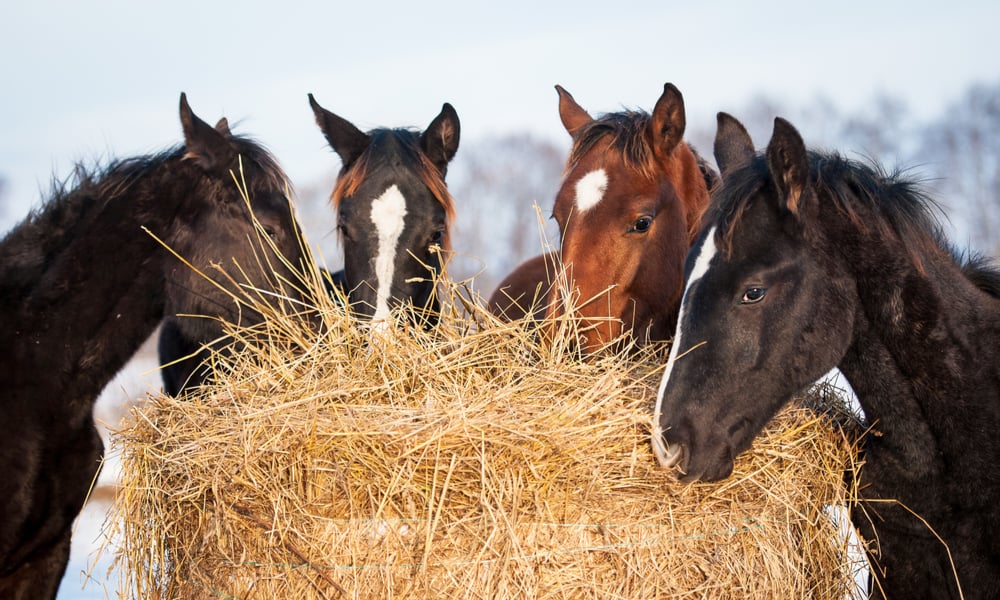
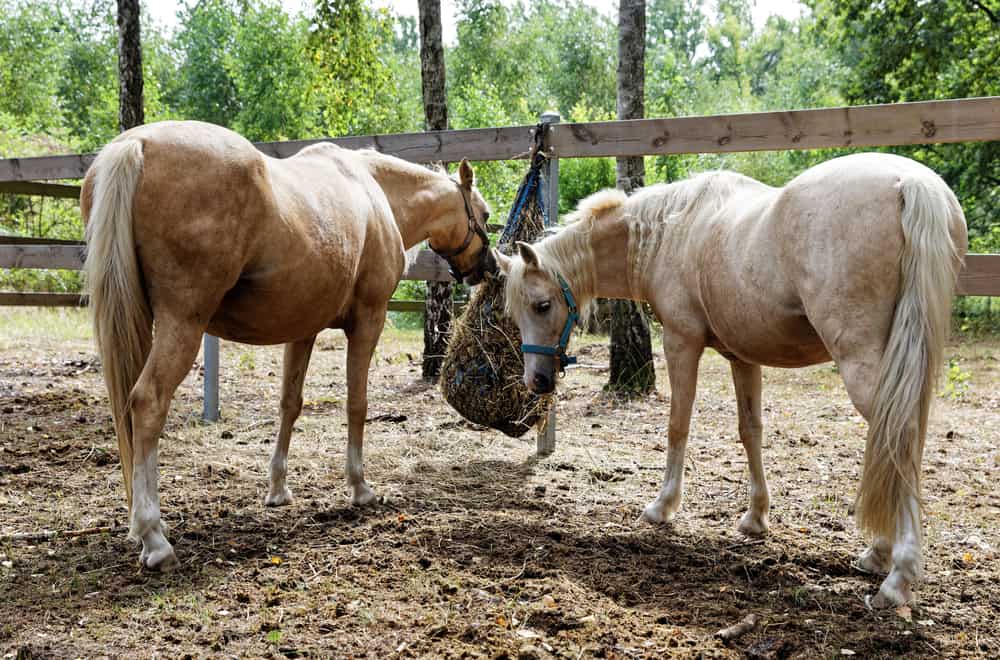
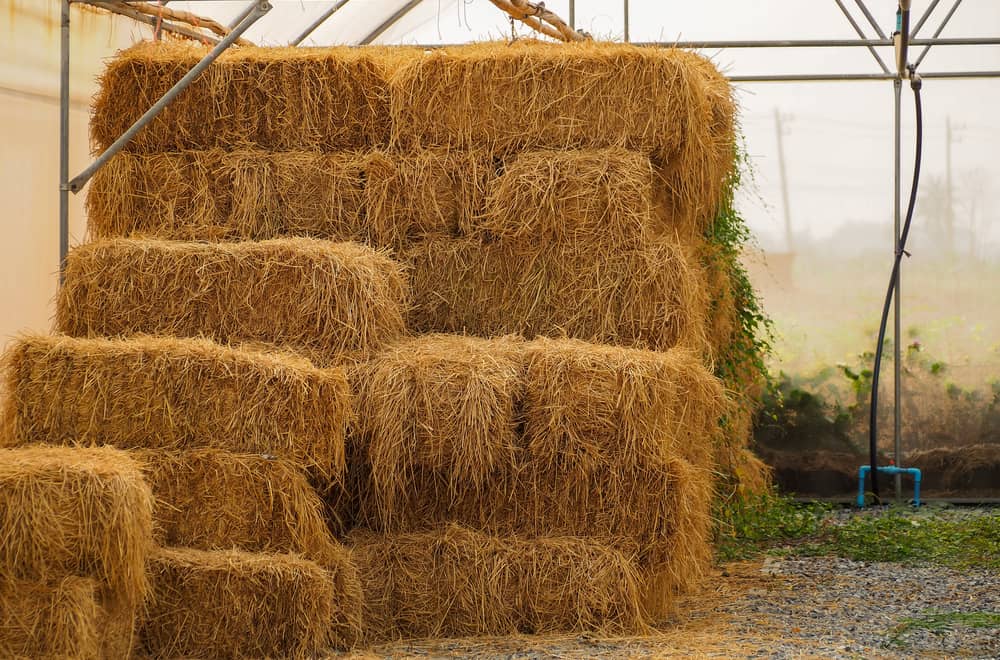
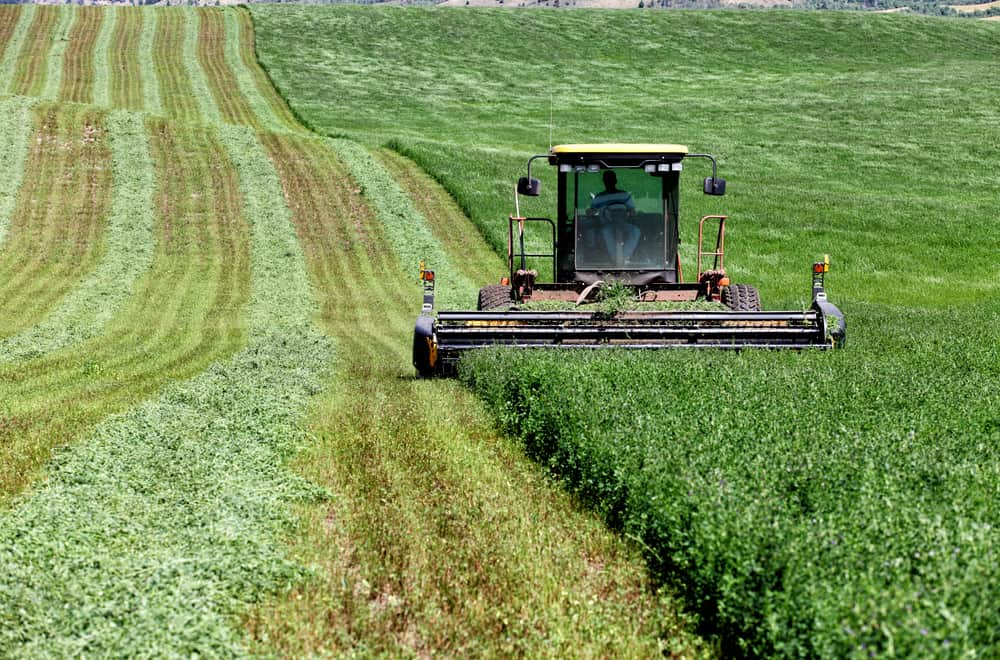

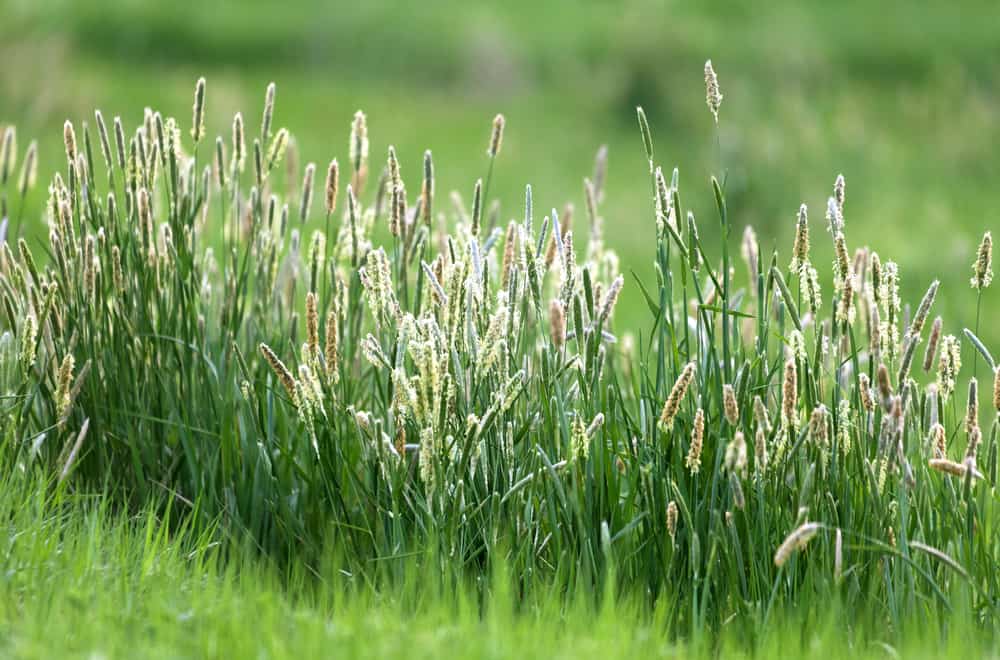
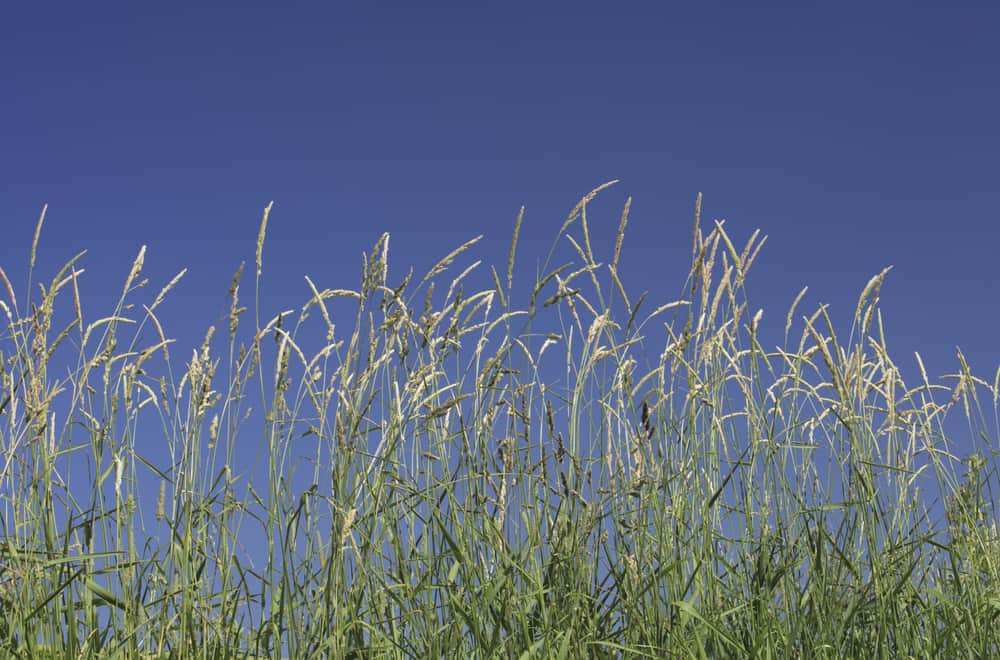
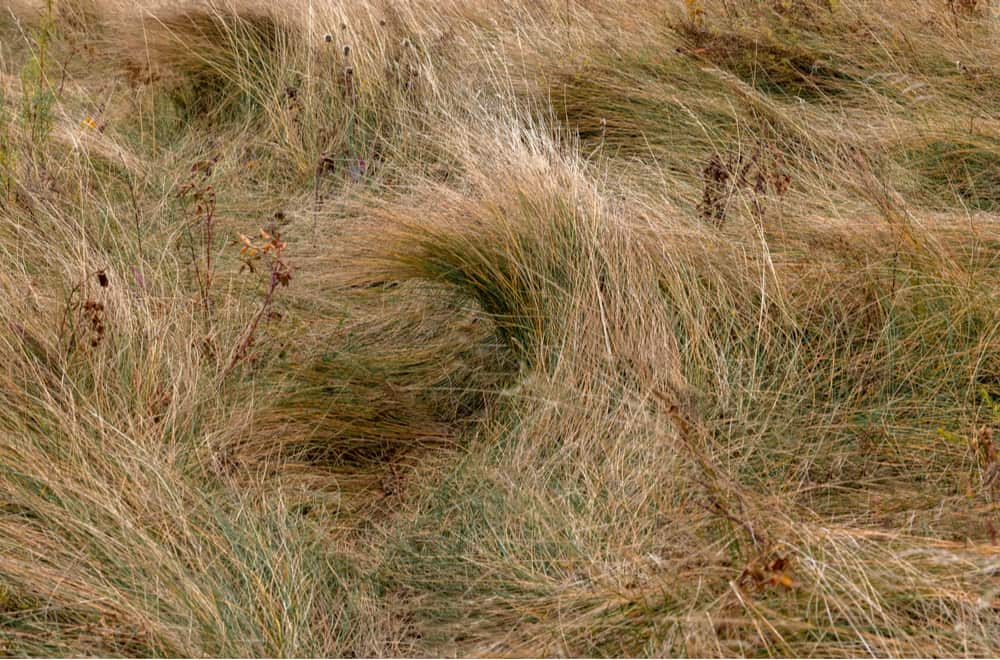
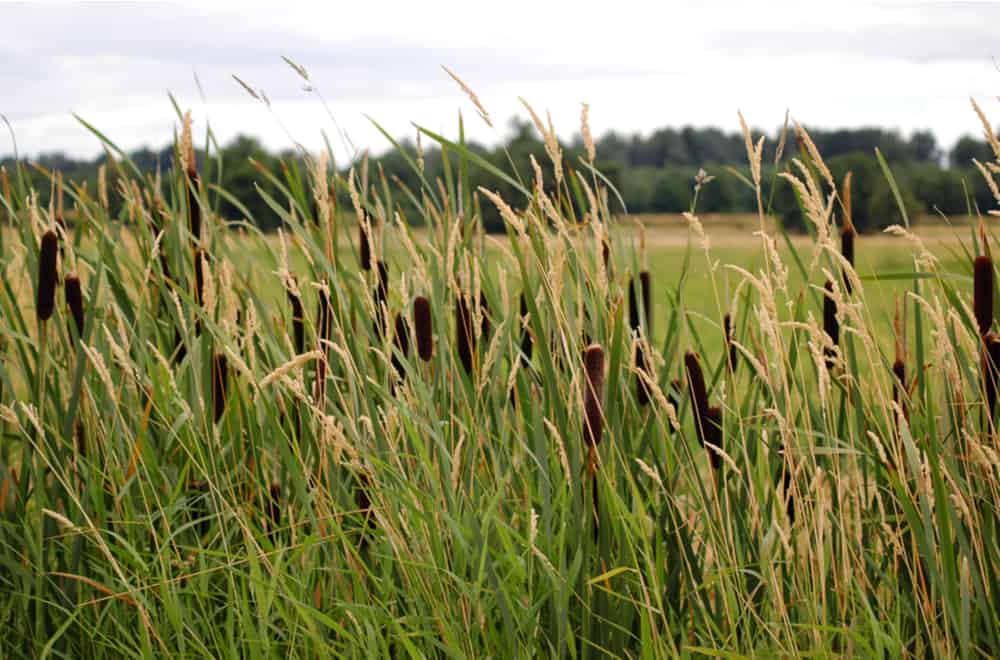
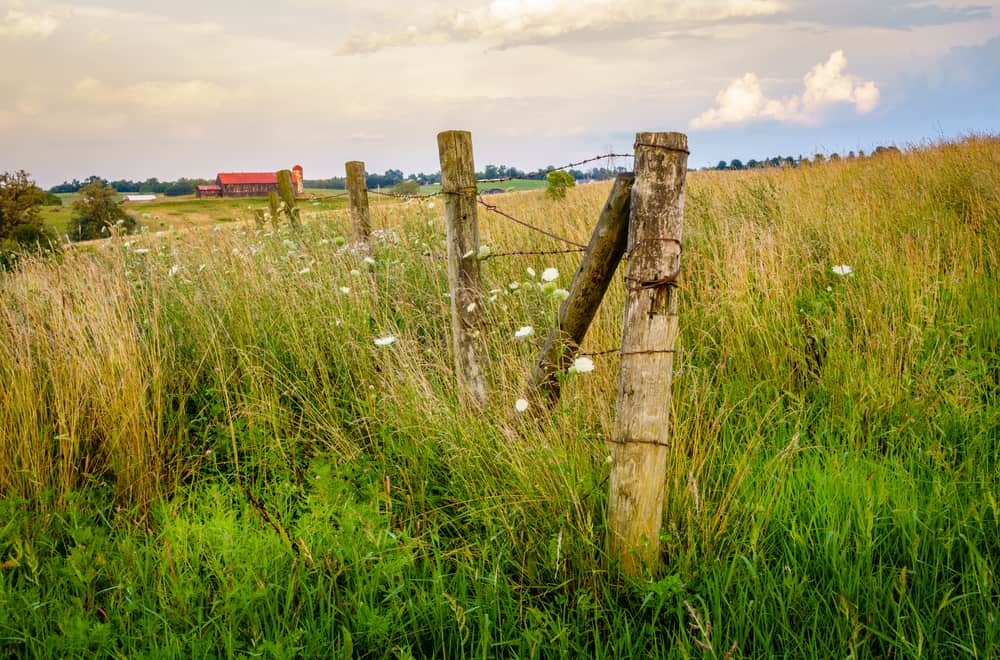
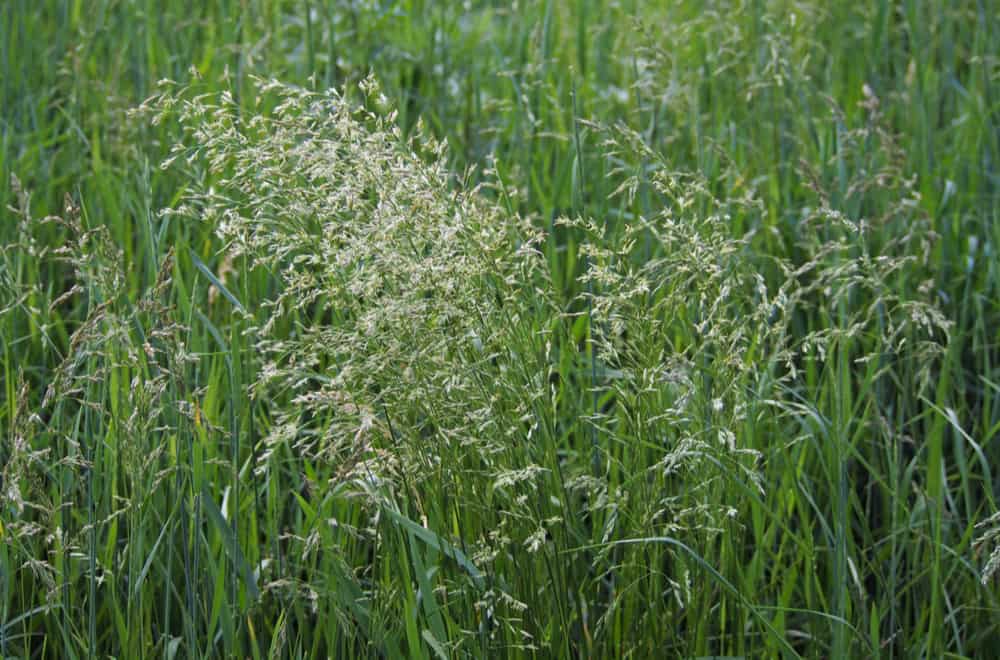
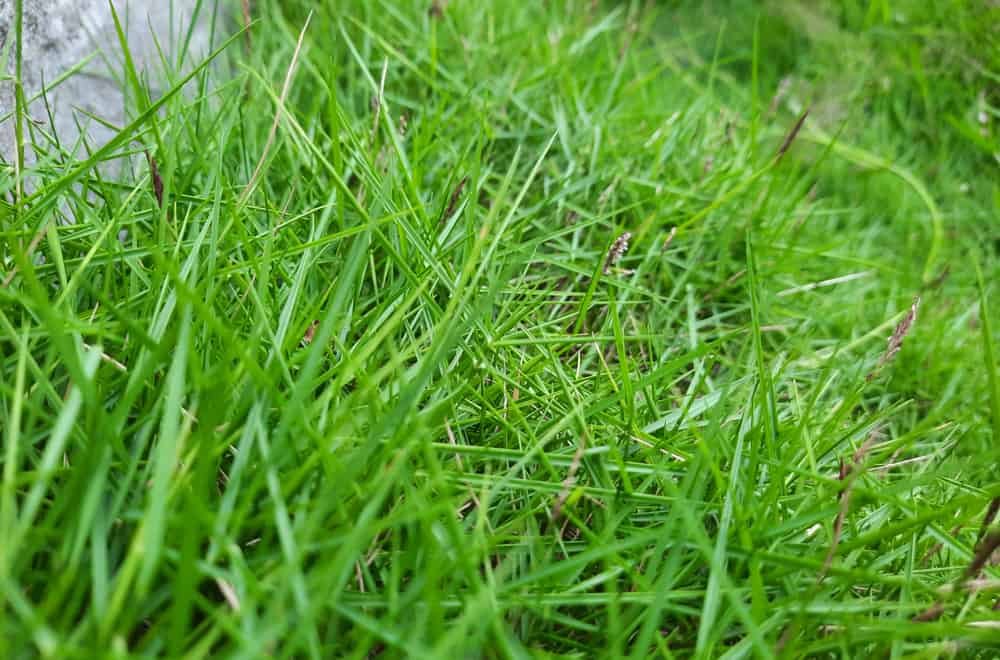
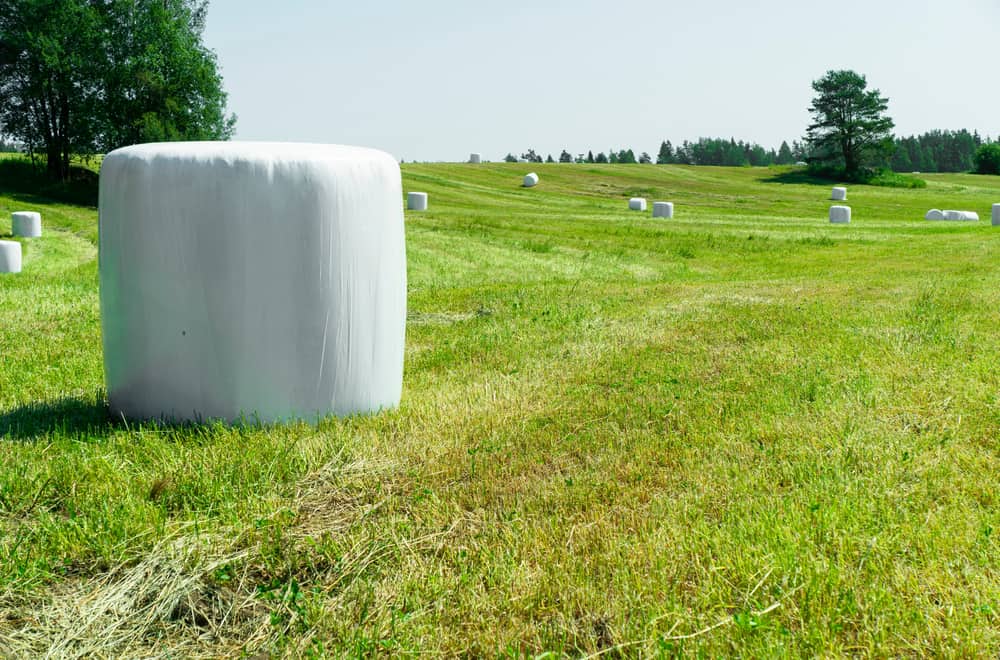
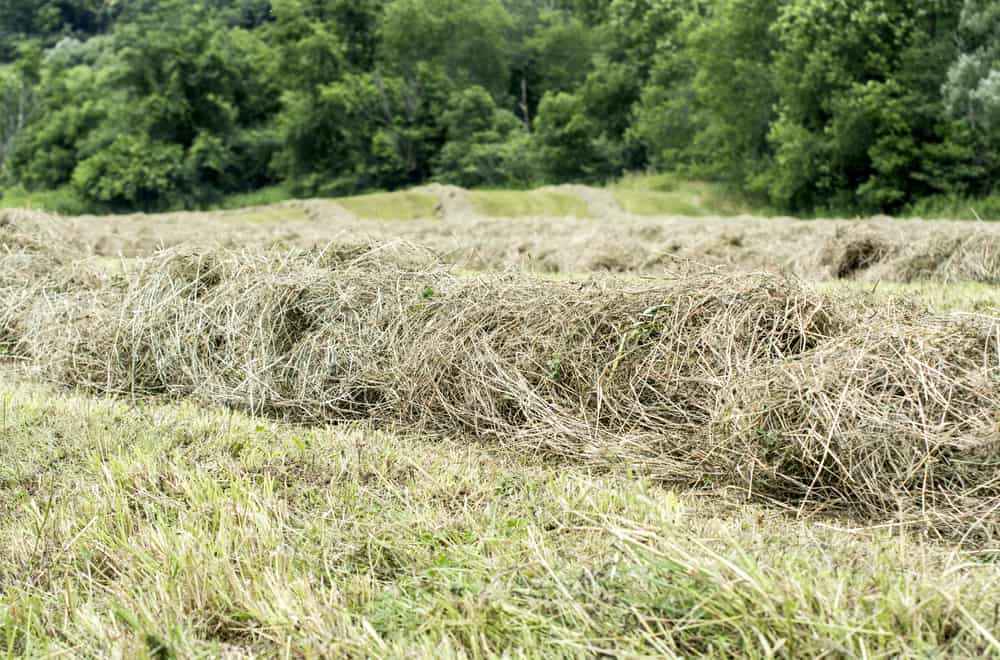








In addition to grasses, can horses eat vegetables?
Great article! I often feed my horse by Timothy Grass and Fescue. They seem to like these hay type the most. But after reading your post, I’ll consider to add one of other types for them to try.
We bought grass hay that turned out to have alfalfa in it. It foundered one of our horses, a registered buckskin mare. She’s gone and I will never buy alfalfa again. They wont even eat it in the pasture. It was heartbreaking and a sad lesson learned.